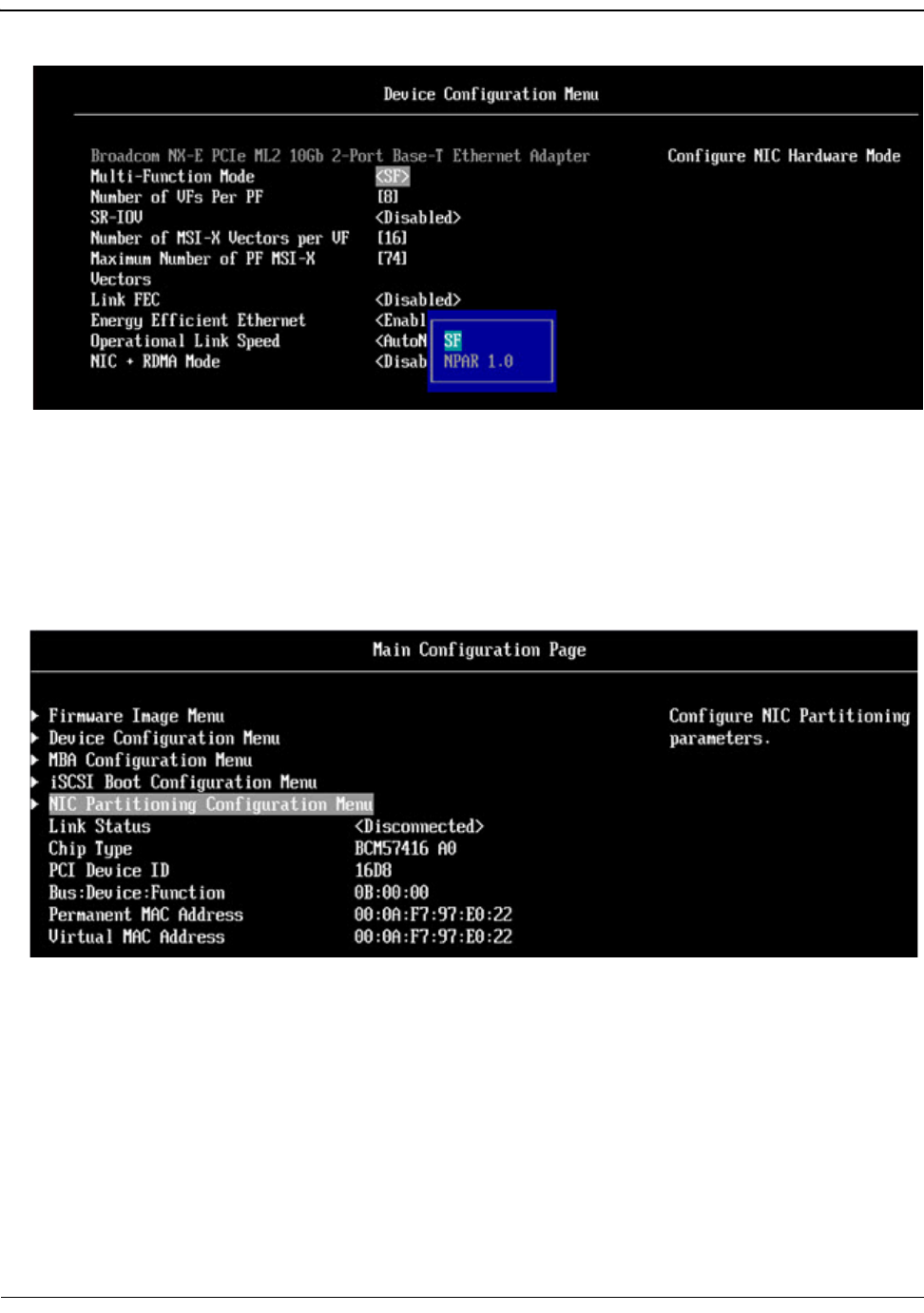Users Guide
Table Of Contents
- Revision History
- Table of Contents
- Regulatory and Safety Approvals
- Functional Description
- Network Link and Activity Indication
- Features
- Software and Hardware Features
- Virtualization Features
- VXLAN
- NVGRE/GRE/IP-in-IP/Geneve
- Stateless Offloads
- UDP Fragmentation Offload
- Stateless Transport Tunnel Offload
- Multiqueue Support for OS
- SR-IOV Configuration Support Matrix
- SR-IOV
- Network Partitioning (NPAR)
- RDMA over Converged Ethernet – RoCE
- Supported Combinations
- Installing the Hardware
- Software Packages and Installation
- Windows Driver Advanced Properties and Event Log Messages
- Teaming
- System-level Configuration
- ISCSI Boot
- VXLAN: Configuration and Use Case Examples
- SR-IOV: Configuration and Use Case Examples
- NPAR – Configuration and Use Case Example
- RoCE – Configuration and Use Case Examples
- DCBX – Data Center Bridging

NPAR – Configuration and Use Case ExampleNetXtreme-E User’s Manual
September 4, 2019 • NetXtreme-E-UG103 Page 69
NPAR is enabled in combination with SR-IOV. For some ARI capable OEM systems, the NParEP button is
available to explicitly allow the BCM5741X to support up to 16 partitions. Switching from Single Function
mode to Multifunction mode, the device needs to be re-enumerated, therefore changes will not take effect
until a system reboot occurs.
2. Once NPAR is enabled, the NIC Partitioning Main Configuration Menu option is available from the main NIC
Configuration Menu associated with each physical port.
3. The NIC Partition Configuration Menu (shown below) allows the user to choose the number of partitions that
should be allocated from the selected physical port. Each BCM5741X NIC can support a maximum of 16
partitions on an ARI capable server. By default, dual-port adapters are configured for eight partitions per
physical port. Configuration options for each partition are also accessible from this menu. For some OEM
systems, the HII menu also includes a Global Bandwidth Allocation page where the minimum (reserved) and
maximum (limit) TX Bandwidth for all partitions can be configured simultaneously.










